United States Army Branches
Army branches are groupings of specialties that officers and enlisted members might occupy based on their job. Basically, it all comes down to their expertise. Soldiers in the United States Army can perform a variety of functions, receive the necessary training, and develop specialized expertise in an area. Depending on their MOS, soldiers utilize a variety of vehicles and employ a variety of weapons. These primary job functions determine their Military occupational Specialty (MOS).
Depending on their MOS (based on training and expertise), soldiers are assigned to particular branches of the Army. Officers who command groups of soldiers in these specialized areas are appointed to that particular branch. There are also some special branches that are largely dependent on rank in addition specialty. To see a complete list of enlisted MOS’s and the branch to which they are assigned, click here to view the table.

Branch Groups
In the past, the United States Army separated branches into three main groups; combat arms, combat support, and combat service support. In more recent times, the Army has changed the way that they group the branches together. Nowadays, the branches are separated into many smaller groups rather than three. The newer groupings for the branches are; maneuver, fires, maneuver support, special operations, effects, operations support, and force sustainment.
Past Branch Groupings
Combat Arms
Combat arms branches, historically, include those units that engage in direct combat with the enemy. In the United States Army, this combat is typically in the form of ground combat consisting of large numbers of personnel employing a various skills and methods while deploying a variety of different weapon systems and equipment. These engagements can be conducted on a host of terrains and under diverse weather conditions. It includes both urban and rural scenarios.
Simply put, combat arms branches are generally comprised of those units that carry and/or employ a weapon system. When forces from different branches come together with many different combat arms unit types supporting each other, it is called “combined arms” warfare. Combat arms branches include;
- Air Defense Artillery
- Armor
- Aviation
- Cavalry
- Field Artillery
- Infantry
- Special Forces
Combat Support
Combat support branches are composed of units whose primary function is to provide fire support and operational assistance to the combat arms units that are directly engaging the enemy. These branches provide a host of specialized support functions that include; chemical warfare, engineering, intelligence, security, and communications among other things. Combat support unit are distinguished from combat service support unit in that they provide “operational support” to combat arms units. In other words, they assist in engaging the enemy. Combat support branches include;
- Chemical
- Civil Affairs
- Cyber
- Military Intelligence
- Military Police
- Psychological Operations
- Signal
Combat Service Support
Combat service support units provide “logistical” support to both combat arms and combat support units. In essence, they give these other units the support that they need to continue the fight. They provide a variety of essential services like; supply, maintenance, transportation, health services, and others. The list of branches that comprised the combat service support category includes those whose activity is geared toward “sustainment” and, subsequently, were reclassified under that category under the newer organization. Combat service support branches included;
- Adjutant General
- Acquisition
- Chaplain
- Finance
- Judge Advocate General
- Logistics
- Ordnance
- Quartermaster
- Medical
- Transportation

Current Branch Groupings
Maneuver, Fires, and Effects
- Air Defense Artillery
- Armor
- Aviation
- Cavalry Scout
- Chemical
- Engineers
- Infantry
- Field Artillery
- Military Police
- Psychological Operations
- Special Forces
Operations Support
- Civil Affairs
- Cyber
- Electronic Warfare
- Military Intelligence
- Public Affairs
- Signal
Force Sustainment
- Adjutant General
- Army Music
- Chaplain
- Financial Management
- Judge Advocate General
- Medical
- Ordnance
- Transportation
- Quartermaster


26 Current US Army Basic Branches
Adjutant General Branch

Established in 1775, the Adjutant General’s Corps is the second oldest branch in the United States Army. This personnel in this branch are responsible for providing the Army with; human resource administration, finance, postal services, music, and recruiting and retention.
Adjutant General Branch Mission
According to the Adjutant General’s Corps mission, this branches mission is to;
- Train and develop agile leaders and Soldiers who provide human resources and music support to the force.
- Develop human resource (HR) concepts,
- Develop doctrine
- Develop training
- Develop organizational designs to support an expeditionary Army in war and in peace.
Air Defense Artillery Branch
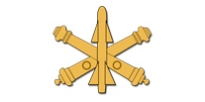
Designated as a separate branch in 1968, the personnel in the Air Defense Artillery (ADA) branch specialize in anti-aircraft weapons. The most common weapon systems today utilize surface to air missiles. ADA systems are typically divided into three categories; SHORAD (Short Range Air Defense), HIMAD (High to Medium Air Defense), and THAAD (Terminal High Altitude Area Defense).
Air Defense Artillery Branch Mission
According to the Army’s Field Manual 3-01, the mission of Air Defense Artillery is “to protect the force and selected geopolitical assets from aerial attack, missile attack, and surveillance.”
Armor Branch

The personnel assigned to the United States Army Armor branch have the primary mission of closing with the enemy ground forces and destroying them using fire, maneuver, and shock action. They employ armored vehicles to accomplish this task. The vehicles used in the Armor mission include the; M1 Abrams main battle tank, the Bradley Fighting Vehicle, and the Stryker Mobile Gun System. Armor branch personnel also employ a host of assorted crew-served and personal weapons.
Armor Branch Mission
Destroying the enemy using fire, maneuver, and shock action.
Aviation Branch
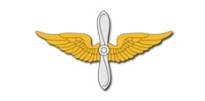
The personnel assigned to the United States Army Aviation Branch are responsible for doctrine, manning and configuration for all army aviation units. Eighty percent of the commissioned officer operational flying positions are positioned within the Aviation branch. Personnel engage in prompt and sustained combat operations.
Aviation Branch Mission
The mission of the Army Aviation branch is to;
- Find, fix, and destroy the enemy through fire and maneuver.
- Provide combat support to maneuver units on the battlefield.
- Provide service support in coordinated operations as an integral member of the combined arms team.
Army Music Branch

The personnel assigned to the United States Army Music branch are tasked with providing musician services throughout the Army. According to Army Regulation 220–90, the mission of the Army bands within this branch is to provide music throughout a range of Army operations. Army Music personnel specialize in a variety of instruments and specialties, in a variety of ensembles, and all styles of music.
Army Music Branch Mission
The Army Music branch helps America and Army forces in the following ways;
- Instilling the will to fight and win
- Fostering the support of our citizens
- Promoting American national interests at home and abroad.
Cavalry Scout Branch

The Cavalry Scout branch of the United States Army is unique in that it is now (more or less) a subcomponent of the Armor Branch. Enlisted soldiers in this branch are trained covert operation and direct force specialists. The officers commanding these units are supplied by the Armor branch. Personnel in this branch are distinguished as “the eyes and ears of the Army”.
Cavalry Scout Branch Mission
Cavalry Scout soldiers use their expertise to;
- Obtain, distribute, and share combat and battlefield situational information.
- Obtain, distribute, and share intelligence on the enemy.
- Obtain, distribute, and share intelligence onenvironmental conditions.
Chaplain Branch

The personnel within the Chaplain Branch include clergy members (officers) and assistants (enlisted) from many different religious faiths. They provide religious services to members of the United States Army and their families. In addition to serving their own faith groups, they also make sure that others are able to observe their own faiths in accordance with Army policy and United States law.
Chaplain Branch Mission
Whether during peacetime or during times of war, Chaplain Branch personnel offer;
- Religious church services
- Counseling
- Moral support
Chemical Branch

The personnel assigned to the Chemical Branch protect our soldiers (and country) from Chemical, Biological Radiological, and Nuclear (CBRN) attacks. Founded as the U.S. Chemical Warfare Service (CWS) during World War I, it became the Chemical Corps in 1946. Interestingly, this branch was initially tasked with delivering chemical weapons instead of providing defense against them.
Chemical Branch Mission
The Chemical branch provides dedicated professionals to;
- Protect against chemical attacks
- Protect against biological attacks
- Protect against Radiological attacks
- Protect against Nuclear attacks
- Provide rapid response to and protection against Weapons of Mass Destruction (WMD)
Civil Affairs Branch
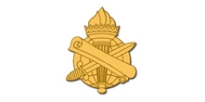
Personnel assigned to the united States Army Civil Affairs branch are responsible for conducting civil-military operations. Unlike most other branches, most of the officers and soldiers within this branch are reservists. One of their primary tasks is to identify and address concerns regarding critical requirements that local citizens are in need of during combat or crisis situations.
Civil Affairs Branch Mission
The officers and soldiers assigned to the Civil Affairs branch focus efforts in five major areas including;
- Civil Information Management
- Foreign Humanitarian Assistance
- Nation Assistance
- Population and Resource Control
- Support to Civil Administration
Cyber Branch

The personnel assigned to the United States Army Cyber Branch conduct information dominance and cyberspace operations. Established in 2010, the Cyber Branch was designed to be the single point of contact between the Army external organizations regarding information operations and cyberspace. These soldiers execute both defensive and offensive cyberspace operations
Cyber Branch Mission
The mission of the United States Army Cyber Branch is to;
- Direct and conduct integrated electronic warfare
- Direct and conduct information and cyberspace operations as authorized
- Ensure freedom of action in and through cyberspace and the information environment
- Deny the same to our adversaries.
Electronic Warfare Branch

Personnel assigned to the Electronic Warfare Branch focus on actions that involve the use of the electromagnetic spectrum. They also focus on the use of directed energy to control , attack an enemy, or impede enemy assaults.
Electronic Warfare Branch Mission
The Electronic Warfare Branch mission includes three major areas;
- Electronic Attack
- Electronic Protection
- Electronic Warfare Support
Engineer Branch
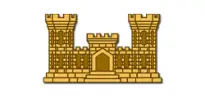
Personnel assigned to the United States Army Engineer branch build structures, develop civil works programs, and work with natural resources. Engineer branch personnel provide the various construction expertises required to build and maintain roads, airfields, and other facilities. They also provide combat support. The Engineer Branch includes the engineer regiment, composed of combat engineer units.
Engineer Branch Mission
The mission of the Engineer Branch is to “Deliver vital public and military engineering services; partnering in peace and war to strengthen our nation’s security, energize the economy and reduce risks from disasters.” The mission is accomplished in three primary mission areas;
- Engineer regiment
- Military construction
- Civil works.
Field Artillery Branch

The Field Artillery Branch is often referred to as the “King of Battle” due to the amount of sheer damage (historically) that personnel from this branch deal to the enemy. Field Artillery branch soldiers use artillery weapons systems to deliver surface-to-surface long range indirect fire. They are trained in tactics, techniques and procedures for the employment of fire support systems.
Field Artillery Branch Mission
The mission of the Field Artillery is to provide fire support in an operational environment.
Financial Management Branch

Personnel serving in the United States Army Finance Branch are responsible for financial operations. Two of the better known and important functions Finance Branch soldiers participate in are payroll and resource management. The Finance Branch is the smallest of all the branches of the United States Army.
Financial Management Branch Mission
The Financial Management Branch mission includes;
- Central Funding
- Disbursing
- Accounting
- Vendor Services
- Policy and Internal Controls
Infantry Branch
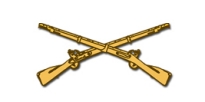
The United States Army Infantry Branch personnel are the main land combat force of the Army. Infantry branch soldiers are responsible for meeting and engaging enemy forces on land. The Infantry is the oldest branch of the Army and is sometimes referred to as the “Queen of the Battle”. Essentially, infantry soldiers are all trained, organized, armed, and equipped the same. There are, however, additional qualifications like Airborne, Air Assault, and Ranger that denote specific specialized skills and training.
Infantry Branch Mission
The Infantry Branch mission is to meet any threat by land. Three different types of Infantry forces are used to accomplish the mission;
- Light infantry
- Stryker Infantry
- Mechanized Infantry
Judge Advocate General Branch
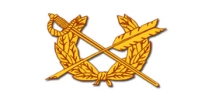
The personnel assigned to the United States Army Judge Advocate General Branch (JAG) serve in the legal arm of the United States Army. Personnel includes Army officers who are also lawyers, legal administrator warrant officers, paralegal noncommissioned officers, junior enlisted support personnel, and civilian employees.
Judge Advocate Branch Mission
In accordance with the Judge Advocate Branch mission, this branch’s personnel;
- Provide legal assistance to soldiers
- Adjudicate claims against the Army
- Advise commands on targeting decisions and other aspects of operational law
- Assist the command in administering military justice by preparing non-judicial punishment actions, administrative separation actions, and trying criminal cases at court-martial.
Medical Branch

The United States Army Medical branch includes medical officers from medical specialist corps and the enlisted personnel that support their activities. This branch is what would be referred to as a “special branch”. Personnel may be assigned to fixed military medical facilities, to deployable combat units, or to military medical research and development duties.
Medical Branch specialty subunits include;
- Medical Corps
- Nurse Corps
- Dental Corps
- Veterinary Corps
- Medical Service Corps
- Medical Specialist Corps
- Aviation Section
Medical Branch Mission
The Medical branch mission is to “Ensure a Ready Medical Force and a Medically Ready Force while providing for the professional develop and personal growth of our MC officers.”
Military Intelligence Branch
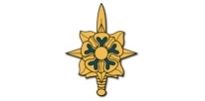
The United States Army personnel assigned to the Military Intelligence branch work to provide essential intelligence. The intelligence that they acquire is not only distributed within the Army but is also shared across the entire national intelligence community.
Military Intelligence Branch Mission
The primary mission of military intelligence in the United States Army is to provide timely, relevant, accurate, and synchronized intelligence and electronic warfare support to tactical, operational and strategic-level commanders.
Military Police Branch

Personnel assigned to the Military Police Branch serve the United States Army as members of its uniformed law enforcement branch. These soldiers provide expertise in policing, detainment, and stability operations during direct combat and during peacetime. Additional combat zone responsibilities are; mounted and dismounted patrols, response force operations, area damage control, route reconnaissance, cordon and search operations, critical site security, and convoy and personnel escorts.
Military Police Branch Mission
The mission of the Military Police branch includes;
- Security and mobility support operations
- Police operations
- Detention operations
- Police intelligence operations
Ordnance Branch

The United States Army Ordnance Branch personnel supply and maintain the weapons and ammunition that Army Combat units need to sustain the fight. In addition to the Quartermaster and Transportation branches, the Ordnance Branch is a critical component of the U.S. Army logistics system.
Ordnance Branch Mission
The United States Army Ordnance branch mission is to support the development, production, acquisition, and sustainment of;
- Weapon Systems
- Ammunition
- Missiles
- Electronics
- Ground Mobility Materiel
Psychological Operations Branch
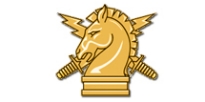
Personnel assigned to the United States Army Psychological Operations branch provide support to Army operations that range from strategic planning to tactical employment. Their primary mission is to persuade enemy forces to act in ways that are favorable to U.S. and allied forces. The Psychological Operations Branch is primarily responsible for the analysis, development and distribution of intelligence used for information and psychological effect.
Psychological Operations Branch Mission
Psychological operations support combat and national security objectives at multiple levels including;
- Tactical level
- Operational level
- Strategic level
Public Affairs Branch

Personnel serving in the United States Army Public Affairs branch deal with media and community issues. This includes media relations offices that have been created for more specific and limited purposes. Branch personnel may be officers, enlisted soldiers, or civilian contractors. Public Affairs branch members play an important role in both contingency operations and during deployments.
Public Affairs Branch Mission
The Public Affairs mission includes;
- Planning, budgeting for, executing and evaluating the effectiveness of public affairs programs.
- Providing public affairs advice, counsel and support for commanders and senior staff members.
Quartermaster Branch

Personnel serving in the Quartermaster Branch of the United States Army ensure that soldiers have the food, water, fuel, repair parts, and additional services that they need to accomplish their missions. The Quartermaster Branch is one of the three Army logistics branches along with the Transportation and Ordnance branches. Their efforts are key in the area of force sustainment.
Quartermaster Branch Mission
The mission of the Quartermaster Branch involves providing the following;
- general supply
- Mortuary Affairs
- subsistence (food service)
- petroleum and water
- field services
- material and distribution management
Signal Branch
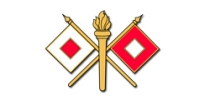
Personnel assigned to the United States Army Signal branch are highly trained experts that operate and maintain the Army’s data systems, and resources. Officers and enlisted soldiers from this branch create and manage communications and information systems for the authority and direction of combat forces from other branches.
Signal Branch Mission
Support for the command and control of combined arms forces.
- Network operations (information assurance, information dissemination management, and network management)
- Management of the electromagnetic spectrum.
- Designing, installing, data communications networks
- Integrating tactical, strategic and sustaining base communications, information processing and management systems into a seamless global information network.
Special Forces Branch

The overall mission of the personnel assigned to the United States Army Special Forces Branch includes training and leading unconventional warfare (UW) forces as well as clandestine guerrilla forces in an occupied nation. They have become known as the “green berets” because of the easily recognizable headgear that they wear. Special Forces soldiers operate in seven geographically focused groups.
Special Forces Branch Mission
Units within the branch are capable of executing nine primary missions according to special warfare doctrine;
- Unconventional warfare
- Foreign internal defense
- Direct action
- Counter-insurgency
- Special reconnaissance
- Counter-terrorism
- Information operations
- Counter-proliferation of weapons of mass destruction
- Security force assistance
In addition, secondary missions include;
- Combat search and rescue (CSAR)
- Counter-narcotics
- Hostage rescue
- Humanitarian assistance
- Humanitarian demining
- Information operations
- Peacekeeping
- Manhunts
Transportation Branch

Established in 1942, the United States Army Transportation branch (along with the Quartermaster and Ordnance Branches) are part of Army logistics. Personnel assigned to this branch the operational support in the area of transportation that is fundamental in the execution of the Army’s mission. For this reason, the branch motto is “Spearhead of Logistics” and it is the second-largest branch of the Army, as of now.
Transportation Branch Mission
Soldiers of the Transportation Branch move personnel and material by;
- Truck
- Rail
- Air
- Sea

Army Branches Summarized
As previously mentioned, Army branches contain specialties that officers, warrant officers, and enlisted members might occupy based on their job. Expertise is the primary factor in determining the assignment to Army branches. Soldiers utilize a variety of vehicles and employ a variety of weapons according to their Military Occupational Specialty which determines the branches under which they fall.
Originally separated branches into three main groups; combat arms, combat support, and combat service support, branches are now classified in the categories of; maneuver, fires, maneuver support, special operations, effects, operations support, and force sustainment. Major units include Army personnel from most every branch of various ranks working together in unison to form powerful and capable forces during peacetime and during times of war.
[table id=3 /]